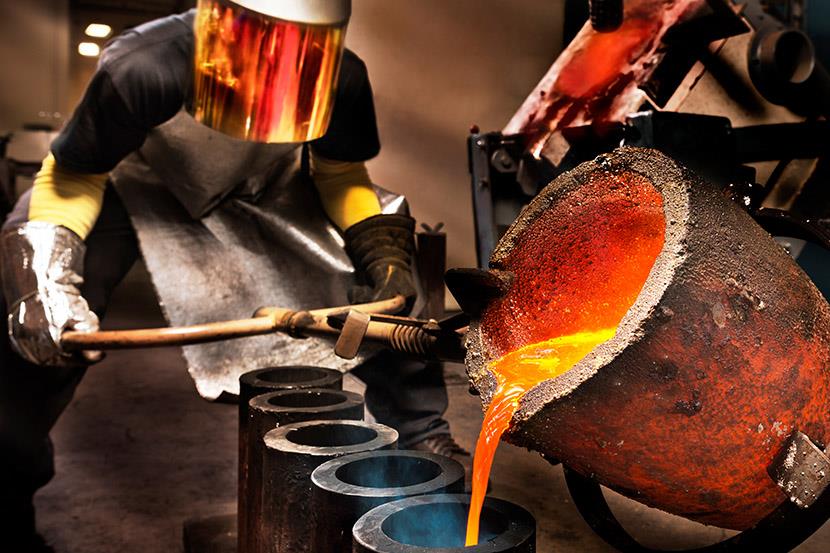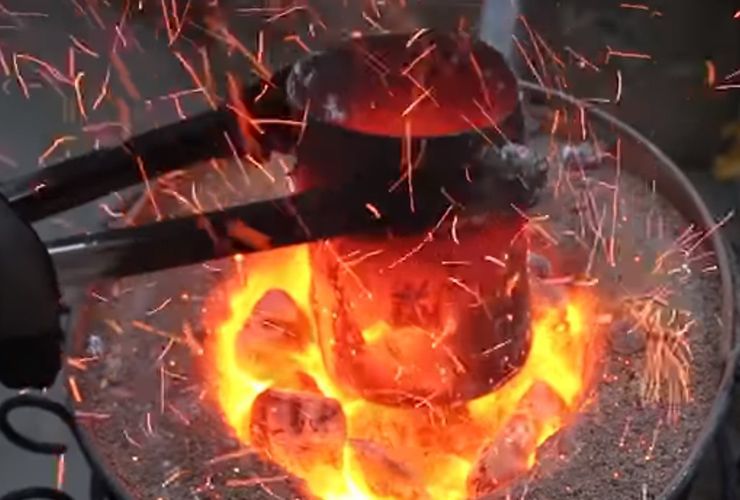Discover the Innovative Methods Utilized in a Metal Foundry for Superior Casting Outcomes
In today's affordable manufacturing landscape, metal foundries are progressively adopting ingenious techniques to improve casting results - Metal Foundry. Advanced computer system simulations enable specific modeling of liquified metal behavior, while 3D printing makes it possible for quick production of complex molds. Additionally, green materials and automation improve procedures. These advancements assure significant enhancements in effectiveness and quality assurance. The influence of these innovations on sustainability and manufacturing practices stays to be fully checked out.
Advanced Computer Simulations in Metal Casting
Advanced computer system simulations have actually changed the metal spreading procedure by boosting precision and efficiency. These innovative devices allow designers to produce virtual versions of actors parts, allowing them to anticipate the habits and analyze of molten metal throughout the spreading stage. By simulating numerous parameters such as temperature, circulation rate, and cooling prices, makers can identify prospective flaws prior to physical production begins.
This proactive approach reduces waste and minimizes pricey errors, ultimately bring about improved product top quality. In addition, simulations assist in the optimization of mold and mildew layouts, guaranteeing that they satisfy the particular demands of each job. The assimilation of computational liquid characteristics (CFD) and limited aspect analysis (FEA) more adds to the precision of these simulations, giving understandings that were previously unattainable. As a result, progressed computer system simulations have come to be an indispensable part of modern metal foundries, considerably advancing the sector's capabilities.
3D Printing for Mold And Mildews and Patterns
3D printing has actually emerged as a groundbreaking method for creating mold and mildews and patterns in the metal foundry sector. This technology allows the rapid production of intricate geometries that standard production techniques struggle to achieve. By making use of additive manufacturing, foundries can develop intricate styles with minimized preparations and material waste. The capacity to create mold and mildews as needed permits better flexibility in design models, facilitating faster prototyping and adjustments.
3D printing can utilize a range of products, including steels and plastics, tailored to particular casting needs. This flexibility improves the accuracy of molds, leading to premium spreading outcomes with improved surface area coatings. In addition, the decrease in the variety of parts called for streamlines setting up processes, additionally enhancing manufacturing effectiveness. As foundries continue to take on 3D printing, they are poised to redefine industry requirements, leading the way for technology and enhanced performance in metal casting operations.
Eco-Friendly Products and Processes
As the metal foundry market faces boosting pressure to lower its ecological impact, the fostering of environmentally friendly products and procedures has come to be important. Shops are currently checking out sustainable options to traditional materials, such as making use of recycled metals and bio-based binders. These products not just minimize waste however also reduced energy usage throughout production.
In addition, advancements in sand casting methods have actually caused the usage of synthetic sands that are less damaging to the environment. Factories are additionally implementing ingenious procedures like molten metal treatment that minimizes emissions and boosts the high quality of actors products.
In addition, water-based finishings have replaced hazardous solvents, advertising a much safer workplace (Aluminum Foundry). By integrating these green methods, metal foundries can markedly lower their environmental influence while preserving top notch casting outcomes. This change not just profits the environment however likewise straightens with the growing consumer demand for sustainable production solutions
Automation and Robotics in Foundry Workflow
While the metal foundry market embraces advancement, the combination of automation and robotics is transforming operations greatly. Automated systems enhance procedures such as mold production, metal putting, and casting completing, considerably enhancing efficiency. Robotics promote the this handling of heavy products, minimizing the danger of workplace injuries and making sure safer environments.

Further, making use of automated directed vehicles (AGVs) maximizes material transportation within centers, guaranteeing timely delivery of components to ideal workstations. By implementing these modern technologies, foundries can adapt to fluctuating demands with greater dexterity, eventually causing boosted earnings and competitiveness in the marketplace. As automation and robotics remain to evolve, they hold the possible to redefine standard foundry practices and drive more innovations in casting methods.
Real-Time Tracking and Top Quality Control Techniques
The developments in automation and robotics have led the way for more advanced techniques to high quality guarantee in metal foundries. Real-time tracking systems make use of sophisticated sensors and information analytics to track important parameters throughout the spreading procedure. These systems continually assess variables such as stress, product, and temperature level composition, enabling immediate discovery of inconsistencies from established criteria.
Quality control strategies currently integrate artificial intelligence formulas that analyze historic data to forecast possible issues prior to they occur. This positive strategy minimizes waste and enhances general production performance. In addition, integrated comments loopholes permit for rapid adjustments, guaranteeing that each spreading fulfills rigid high quality demands.
The implementation of electronic doubles-- virtual reproductions of physical assets-- has actually likewise changed quality control, allowing engineers to replicate and optimize procedures in real-time. Together, these ingenious techniques considerably boost the dependability and quality of spreadings, establishing brand-new industry standards in metal foundry operations.
Frequently Asked Questions
What Kinds of Metals Are Frequently Cast in Foundries?
Generally cast steels in foundries consist of light weight aluminum, bronze, brass, and iron. Each metal shows one-of-a-kind residential or commercial properties, making them ideal for numerous applications, such as vehicle components, equipment, and imaginative sculptures, enhancing their convenience in production.

How much time Does the Casting Refine Normally Take?
The spreading procedure usually takes several hours to days, depending upon aspects such as the intricacy of the mold and mildew, sort of metal utilized, and cooling needs. Each phase affects the overall duration noticeably.
What Precaution Are in Location for Foundry Employees?

How Are Flaws in Castings Identified and Addressed?
Defects in castings are determined with why not check here aesthetic examinations and non-destructive screening methods. When spotted, foundry employees address them by improving procedures, changing material structures, and executing corrective actions to guarantee top quality and conformity with criteria.
What Is the Price Range for Metal Casting Providers?
The price variety for metal casting services normally ranges $1 to $10 per extra pound, depending upon variables such as product kind, intricacy of the style, and manufacturing quantity, influencing overall prices substantially.
In today's affordable manufacturing landscape, metal foundries are progressively embracing ingenious methods to boost casting outcomes. As the metal foundry market deals with increasing stress to minimize its ecological footprint, the fostering of green materials and processes has actually come to be essential. Foundries are now discovering sustainable alternatives to standard materials, such as utilizing recycled metals and bio-based binders. By integrating these green practices, metal foundries can considerably lower their ecological influence while preserving high-grade spreading outcomes. The innovations in automation and robotics have led the means for a lot more sophisticated techniques to quality guarantee in metal foundries.